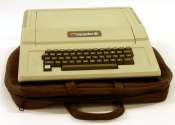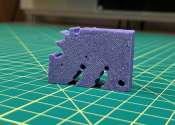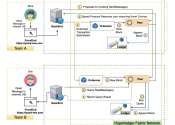Method identified to double computer processing speeds
Imagine doubling the processing power of your smartphone, tablet, personal computer, or server using the existing hardware already in these devices.
Feb 22, 2024
0
70
Hardware

Imagine doubling the processing power of your smartphone, tablet, personal computer, or server using the existing hardware already in these devices.
Feb 22, 2024
0
70
Business

Apple Vision Pro is a mixed-reality headset—which the company hopes is a "revolutionary spatial computer that transforms how people work, collaborate, connect, relive memories, and enjoy entertainment"—that begins shipping ...
Jan 30, 2024
0
24
Consumer & Gadgets

Forty years after igniting a PC revolution, Apple's Mac is stronger than ever and could reach new glory due to AI computing—or be left behind.
Jan 22, 2024
0
12
Consumer & Gadgets

Forty years ago Steve Jobs revolutionized personal computing by launching the Apple Macintosh, the first PC with a user-friendly mouse and graphical interface that helped the machines enter the everyday lives of people for ...
Jan 22, 2024
0
5
Consumer & Gadgets

Technology innovation requires solving hard technical problems, right? Well, yes. And no. As the Apple Macintosh turns 40, what began as Apple prioritizing the squishy concept of "user experience" in its 1984 flagship product ...
Jan 21, 2024
0
1
Robotics

A team led by Northwestern University researchers has developed the first artificial intelligence (AI) to date that can intelligently design robots from scratch.
Oct 2, 2023
2
296
Security

Data and security breaches are becoming increasingly common, highlighting the vulnerabilities of existing messaging and communications platforms. Devising computational tools and systems that better protect sensitive data ...
Machine learning & AI

Artificial intelligence (AI) is being used increasingly in many different walks of life from the large language models and image-generation tools that can produce readable text and intriguing graphics based on a prompt to ...
May 31, 2023
0
11
Security

A Ukrainian man has been charged with computer fraud for allegedly infecting millions of computers with malware in a cybercrime operation known as "Raccoon Infostealer," the US Justice Department said Tuesday.
Oct 25, 2022
0
29
Security

The computer hacker who stole personal data of almost 10 million customers of a telecommunications company in one of Australia's worst privacy breaches used techniques to conceal their identity, actions and whereabouts, police ...
Sep 30, 2022
0
4
A personal computer (PC) is any general-purpose computer whose size, capabilities, and original sales price make it useful for individuals, and which is intended to be operated directly by an end user, with no intervening computer operator.
A personal computer may be a desktop computer, a laptop computer or a tablet computer. The most common current operating systems for personal computers are Microsoft Windows, Mac OS X and Linux, while the most common microprocessors are x86-compatible CPUs, ARM architecture CPUs and PowerPC CPUs. Software applications for personal computers include word processing, spreadsheets, databases, Web browsers and e-mail clients, games, and myriad personal productivity and special-purpose software. Modern personal computers often have high-speed or dial-up connections to the Internet, allowing access to the World Wide Web and a wide range of other resources.
A PC may be used at home, or may be found in an office, often connected to a local area network (LAN). This is in contrast to the batch processing or time-sharing models which allowed large expensive systems to be used by many people, usually at the same time, or large data processing systems which required a full-time staff to operate efficiently.
While early PC owners usually had to write their own programs to do anything useful with the machines, today's users have access to a wide range of commercial and non-commercial software which is provided in ready-to-run form. Since the 1980s, Microsoft and Intel have been dominating much of the personal computer market with the Wintel platform.
This text uses material from Wikipedia, licensed under CC BY-SA